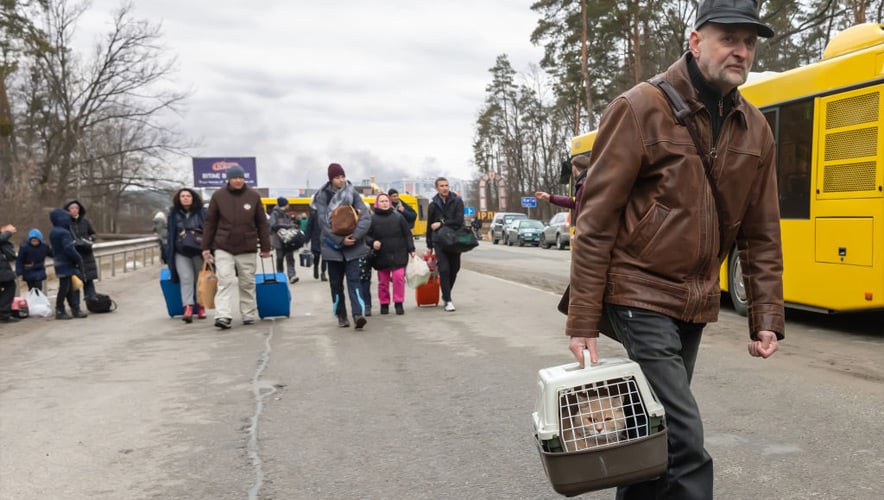Large-Scale Evacuations: Lessons Learned from Afghanistan and Ukraine
Even when an organization or government knows well in advance that it may have to fly or drive employees or citizens to a safer location, a large-scale evacuation can present pitfalls.
During the GSX 2022 education session “Large-Scale Evacuations: Tactics, Techniques & Protocols,” experts from International SOS discussed trends based on recent evacuations that organizations may want to plan for in advance.
The Basics
Evacuation procedures can be broken down into five stages:
- Preparation
- Warning
- Stand-by
- Evacuation of non-essential personnel
- Full evacuation
Jeremy Prout, CPP, security director of security solutions for International SOS, noted that administering the actual evacuation could often be the trickiest part. For organizations with facilities or personnel in foreign nations, having a policy and detailed plan, complete with redundancies and back-ups, is essential.
This also applies to organizations with a smaller footprint or staff in a region, added Julian Moro, senior vice president and regional security director for International SOS.
Leaving Afghanistan
When U.S. President Joe Biden ordered troops to leave Afghanistan in 2021 as the Taliban advanced on Kabul, hundreds of Afghan citizens sought to flee the country or obtain refugee status in other countries. Their efforts were captured in images and videos of crowded airports, with some people so desperate that they clung to the outside of planes.
The evacuations were marked by individuals turning to their organizations and asking what was being done to help locals leave the country.
For the first time, the focus to evacuate people was not only limited to staff, expats, and their families, according to Henning Snyman, security director for the U.S. South Atlantic region at International SOS. It also extended to locals.
“We never evacuated local nationals before Afghanistan,” Snyman said.
And the same ethical considerations applied when organizations began evacuation procedures in Ukraine after Russia invaded earlier this year.
“Huge companies had a presence in Ukraine,” Snyman recalled. And once international staff and expats were evacuated, they started pressuring their organizations to assist local nationals there, too.
“There’s no legal obligation to assist local nationals. It’s a moral obligation, and that’s something that an organization needs to decide for themselves as part of your policies,” Snyman said in an interview with The GSX Daily. “But it’s very difficult to manage that.”
Planning for Pets
Prout and Snyman also noted that they are becoming less surprised when someone refuses to leave behind a pet when evacuating.
“I thought I’d seen everything, but one of the evacuations I was involved in there was two rabbits, two dogs, a cat, and two geese,” Snyman said.
While such situations may sound like a scene out of Doctor Dolittle, Snyman noted that for those compelled to travel, they are possibly leaving behind their homes and entire lives. They would naturally want to take their pets, who many see as family members, with them.
Since many people would be unwilling to abandon a pet, new evacuation policies should consider accommodations for non-human dependents. The International Fund for Animal Welfare has even compiled a list of recommendations and aspects to consider for individuals who are evacuating with their pets, including what kind of documentation is recommended for animals and any quarantine requirements for pets upon arrival in a new country.
“Put yourself in their shoes: your life is turned upside-down. You’ve got nothing but your cat,” Snyman said.
Anyone responsible for mapping out an evacuation must consider the various practicalities involved in transporting and caring for animals, so they do not run off or otherwise hamper the process.
Sara Mosqueda is associate editor for Security Management, the publisher of The GSX Daily. Connect with her on LinkedIn.
